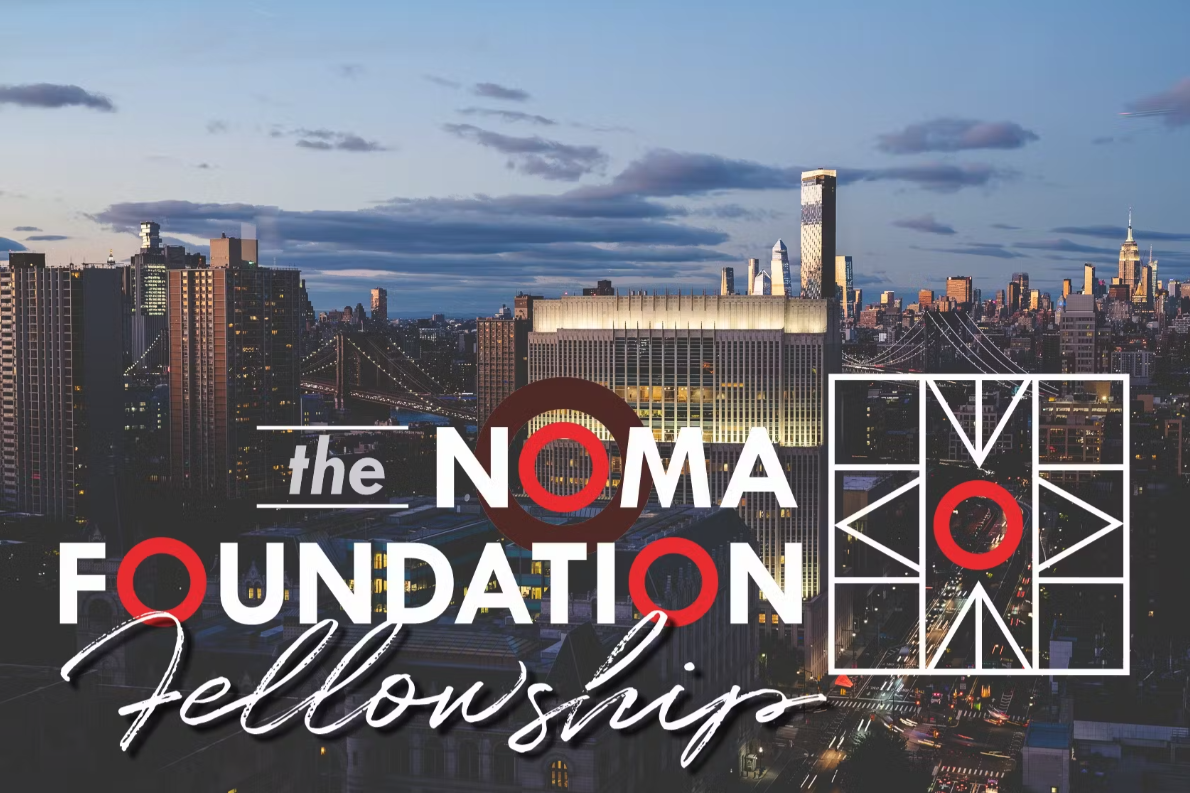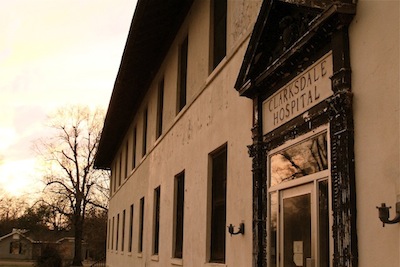Movement Strategy Center Explores Architecture, Community Engagement, and Mentorship with Walter Hunt

At the core of the environmental movement is a vision to reshape and align our communities toward a regenerative relationship with the earth. At Movement Strategy Center (MSC), we’re not just embracing this vision; we’re cultivating the leaders who are defining it. Meet Walter Hunt, an architectural designer and urbanist whose passion for reimagining the built environment led him to Movement Strategy Center via the Environmental Fellows Program (EFP) at the Yale School of the Environment (YSE).
Hunt’s commitment to environmental justice is deeply rooted in his personal history and professional journey. He grew up in Akron’s inner city — where he was exposed to the toxic legacy of rubber production — and emerged as an advocate for community-centered approaches in the environmental field. He guides first generation students who aspire to careers in design and urban planning, and has worked to expose Detroit public high school students to the world of architecture. His projects, often in collaboration with grassroots organizations and sustainability initiatives, are a testament to his drive for meaningful change. His experience — and his empathy — resonates with MSC’s core values of equity, inclusivity, and collaboration.
We (virtually) chatted with Hunt about his 12-week experience with MSC, how strong mentors can open new opportunities, and the importance of designing “with” a community rather than “for” it. It’s a story not just about building structures but about building bridges to a more equitable and just world.
This interview has been edited for length and clarity.
MSC: How did growing up in inner city Akron, OH, shape you and inspire your interest in environmental justice and your work with Movement Strategy Center?
WH: Growing up in Akron, the home of Goodyear Rubber Company, I was surrounded by factories and rubber production. It’s a place with a lot of toxic waste, and many people got sick … This led me to do my thesis on environmental justice, to take off the architect hat and delve into the environment, urban planning, and environmental hazards.
[Thinking back, that] drew me to MSC. I saw that there was an environmental justice section on the website, and I thought I could apply my background — coming from Akron, a place riddled with toxins — as well as my interest in architecture and our planet …
During my last studio course for graduate school, we had to choose buzzwords … Some people picked community, some picked building materials … But the buzzword that stood out to me was grassroots organizations. [I was] remembering those times in Akron and thinking about the advocacy in my area … I did some research on grassroots organizations throughout the country, promoting sustainable infrastructure [in] New Orleans and Detroit … These were people advocating for a better quality of life.
"Representation is, in fact, important … It gave me the confidence to know that a bunch of other people who are just as passionate about what I’m doing looked like me as well!"

MSC: Can you tell us about some of the organizations you worked with before coming to MSC?
WH: I’ve worked with the National Organization of Minority Architects (NOMA) — and the student chapter, NOMAS. Right now, I’m also working with the Equity in Architecture Consortium, an organization that promotes more equitable professions, particularly in architecture and urban planning.
MSC: What has been your experience with the NOMA, and how do you see the role of minority architects in advancing environmental justice?
WH: [It was through] NOMAS that I noticed social change is possible … Representation is, in fact, important … It gave me the confidence to know that a bunch of other people who are just as passionate about what I’m doing looked like me as well! It gave me the confidence I needed, especially as I [entered the workforce] after undergrad. These experiences helped me a lot, informing my understanding of pedagogy within academia and preparing me to enter the profession.
In an integrated design studio class we kind of played around with advocating for different policy changes and zoning regulations … Our professor was a city commissioner for urban planning, so we got a chance to [study] how zoning is detrimental to certain [minority] communities …
[After graduation,] a lot of what I was doing pertained to sustainability and environment. I worked for a general contractor and engineer focused on creating sustainable design solutions for facades and adaptive reuse projects. [It was there] where I realized … [architects have an] impact on the environment … We [are responsible] for a large carbon footprint. [The built environment generates] 40 percent [of global emissions] — which is very high, almost half!
MSC: In past conversations, you mentioned Professor Cory Henry, who seems to have been a mentor. How have your experiences working with him shaped your perspectives and actions in the field of environmental justice?
WH: I met Henry in my final year of graduate school. We worked with an organization called Delta Commons, which is a nonprofit based in the United Delta area of Mississippi. [The] project was centered around an old hospital in Clarksdale that had a history of refusing treatment to ethnic minorities … Black [folks were] dying in this hospital when they were admitted. [With that] history [in mind], our goal was to redevelop and reuse that hospital within that site context for the community. Being a part of that project scope with Henry drew me to equitable work for nonprofit organizations.

Because you are an architect, people think you should limit yourself to buildings, when that’s not the case at all. Henry decided to call himself an urbanist too, because he tackles a lot of [environmental justice] issues through his practice at Atelier Cory Henry. When we were doing this project for Delta Commons, it was important to recognize it as a food desert, with many food justice issues. We met wonderful people who had urban farms, and politicians, and we met with teachers too, and all [their experiences relate] to the built environment. We heard about the spaces they needed, created schematic designs, and presented them to the community.
MSC: What was the community’s reaction to your presentation?
WH: They liked it … The project focused on agriculture, technology, and economic development. It was also a cultural center. It was important for us to have economic development and create a self sustaining design for our community. I remember thinking it was “unapologetically Black,” as the area is primarily Black. And what made it more special to me [is that] my grandmother and great-grandmother are from Clarksdale … It was a full circle moment for me.
MSC: Can you tell us more about your intentional focus on the planet in your work? How do you believe this approach can inspire the younger generation?
WH: If you’re an architect, you don’t have to focus on being a traditional architect. It’s important to redefine whatever profession you choose to be in because that’s what keeps the evolution of [that profession] going. Don’t be scared to bring your own fresh take.
MSC: During your time with MSC, how did you engage with organizations within our ecosystem, specifically those involved in architectural projects like Alliance for Felix Cove or the Community Development Corporations (CDCs)?
WH: It was really a great pleasure to engage with a lot of the projects. I just got done talking with Dr. Pamela Pugh [of Saginaw Just Transition Indaba] … I [spoke to] Theresa Harlan of Alliance for Felix Cove about the house that she is trying to preserve. [She shared progress] with the historical landscape architect doing the survey and coming up with solutions and ideas to make that area more beautiful … I like being around passionate people because it just makes me passionate as well. Hearing that each of them has a different cause and different intentions and ideas [helped me realize] that it’s all within the same realm … And in order to achieve these things, [community leaders and architects] have to be on the same page.
MSC: Can you explain how conversations with folks like Pugh and Harlan — who are working on different projects and in different regions, but with overlapping missions — influence your research and work?
WH: Just hearing about their needs and being attentive to what they discuss helps me as an architect. Understanding these different spaces, how they can affect people, and knowing [the history] of these places, it’s all important information and relevant to think about from an architect’s point of view … Being empathetic can go a long way in design.
Even talking to Chris Lyric, of When Black + Brown Go Green, hearing about how passionate he was, hearing his story about how his life was changed when he got the chance to be in a green space. He was acknowledging that not a lot of kids have that opportunity … And it does make a difference.
"Being empathetic can go a long way in design."
MSC: As an architect, how do you balance the needs of communities or activists in spaces so influenced by the real estate industry and gentrification? Is every case different?
WH: It’s a lot. The path depends on the kind of route you decide to go down and what practice you want to pursue. Each architect practices differently; there are architects as developers and construction managers … Most see it as a paycheck.
I talked to a friend who reminded me to keep doing the work that I’m interested in … And to keep doing the types of work that inspire me. And that stood out to me because he didn’t just go after anything; he sought [out] adaptive reuse and historic preservation because, for certain projects, it was the morally right thing for him to do.
[A lot of it] is just building relationships, like with anything, being in constant communication. [It’s] like that with MSC, especially when I talked to funders. Sometimes, funders don’t know if a project will be right to fund, especially if it doesn’t have a history. MSC serves as a bridge between projects and the funder. Unfortunately, many marginalized organizations may not get funding, and that’s when I realized MSC’s role is crucial.
MSC: Can you share a little bit more about what your next steps are in your professional journey?
WH: My next step is to keep listening and learning from conversations like the one I had with my friend. I’ll work for a firm for a little while to get my hours, [preferably one] that shares my [ethos and puts communities first]. No matter what stage we are in [in our careers], mentorship is important. With those values [in mind], I will start my own practice.
Walter Hunt has a Bachelor’s from Kent State University and a Master’s from the Taubman College of Architecture + Urban Planning at the University of Michigan, both in Architecture. He will finish Yale’s Environmental Fellows Program in September and currently serves as an Equity in Architectural Education Mentor at the University of Michigan. To learn more about his work or to reach out, connect with him on LinkedIn.

